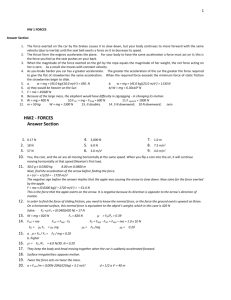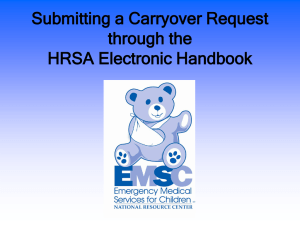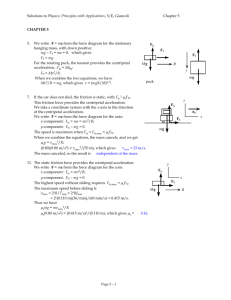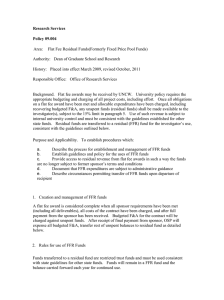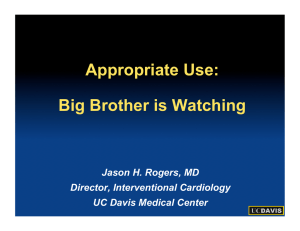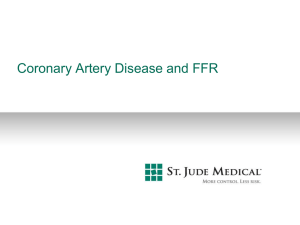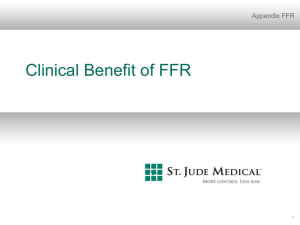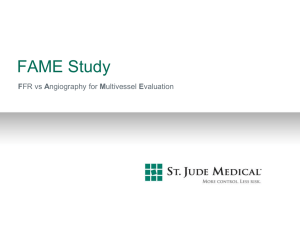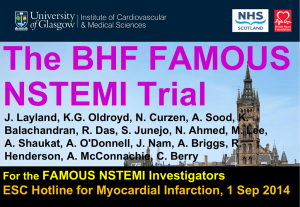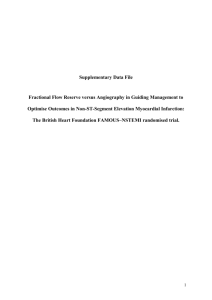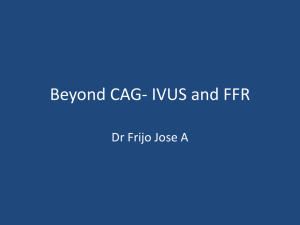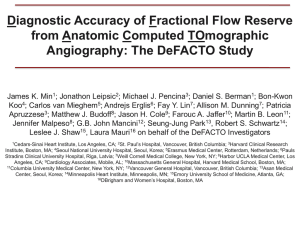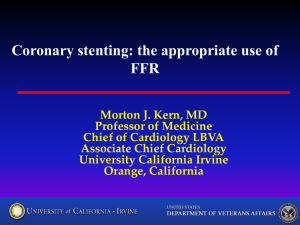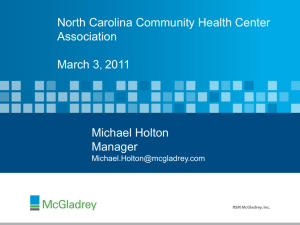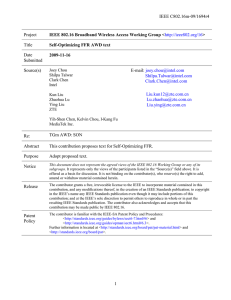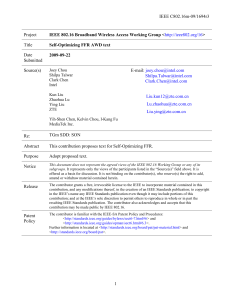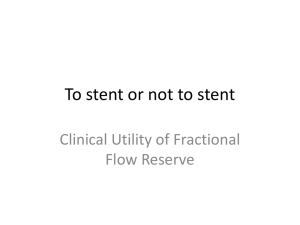Industry St JUDE
advertisement
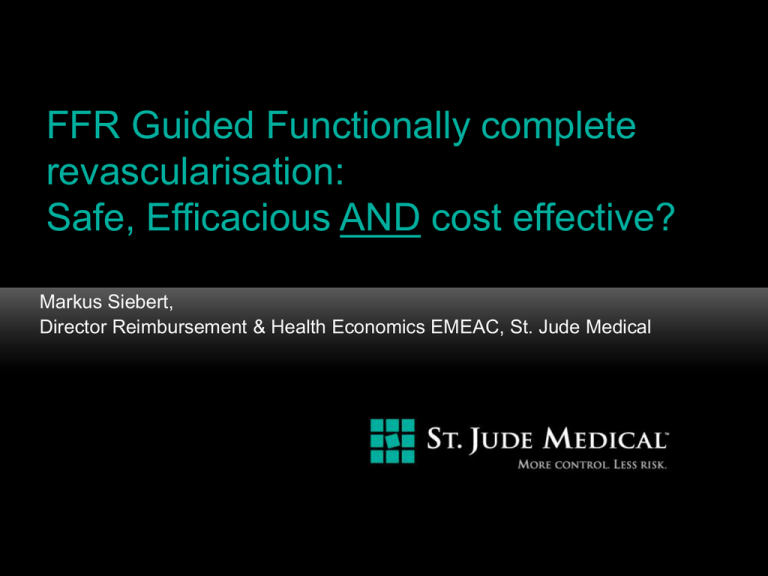
FFR Guided Functionally complete revascularisation: Safe, Efficacious AND cost effective? Markus Siebert, Director Reimbursement & Health Economics EMEAC, St. Jude Medical Conflicts of Interest Employee of St. Jude Medical 2 Clinical effectiveness 3 DEFER: 5-year follow up data 4 FAME: 2-year follow up data 5 Slides 5-8 courtesy Nico H.J. Pijls, MD,PhD, FAME study PI. 6 7 8 9 Clinical Guidelines changes: 10 Clinical Guidelines changes: 11 Cost-effectiveness 12 13 Health Economics FFR single vessel - US 14 MSAC (Australia) HTA on FFR and CFR - 2006 15 Cost-Effectiveness in MSAC HTA 16 Siebert et al: German HTA on FFR, incl HE model on single-vessel patients (2008) Methods: Markov model, life-time horizon, Statutory Health Insurance’s perspective, FFR vs universal PCI in all patients Results: 17 Cohort Incr QALD FFR vs PCI Incr cost FFR vs PCI ICER (cost/QALY) 30y, m/w 9.8 €936 €35,000 40y, m/w 9.0 €757 €31,000 50y, m/w 7.6 €516 €25,000 60y, m/w 5.0 €214 €16,000 70y, m/w 2.2 - €107 FFR dominant DIMDI HTA Report on FFR (2008) "Also Peter Sawicki, head of IQWIG, considers the study important. This investigation would be "an example for medical progress leading to a reduction of spending in health care systems" said Sawicki to SPIEGEL ONLINE. "Now we should think about introducing FFR measurement as quality criterion before stent implantation". Source: Spiegel Online, 15 Jan 2009 18 19 Future research on country-specific cost-effectiveness FFR 20 Rationale Initial cost-effectiveness work for the US and Germany based on DEFER and FAME shows that FFR is highly cost-effective or even cost-saving (better results, lower costs): additional evidence of this kind is needed for individual countries. In addition to cost-effectiveness, the research will also focus on the budget impact for the health care payer of integrating FFR into the CAD treatment pathway in a respective country. Another aspect will be the health impact of FFR on society: Based on the annual incidence of coronary artery disease in a country, the analysis will extrapolate the total number of MACE events that could be avoided through systematic use of FFR. 21 Research approach The economic evaluations will be the result of health economic (Markov) modelling. This analysis will be performed as an unrestricted research grant and will be based on original patient data from the FAME trial. Clinical effectiveness and resource utilisation (e.g. number of stents implanted or doctor’s visits during follow up period) will be taken and multiplied with country-specific cost data, e.g. UK. This approach will deliver health economic results that reflect local cost realities and that should be acceptable to local decisionmakers. The perspective for the analysis will be that of the national health care payer. 22 Thank you msiebert@sjm.com +32 476 565 101 23
